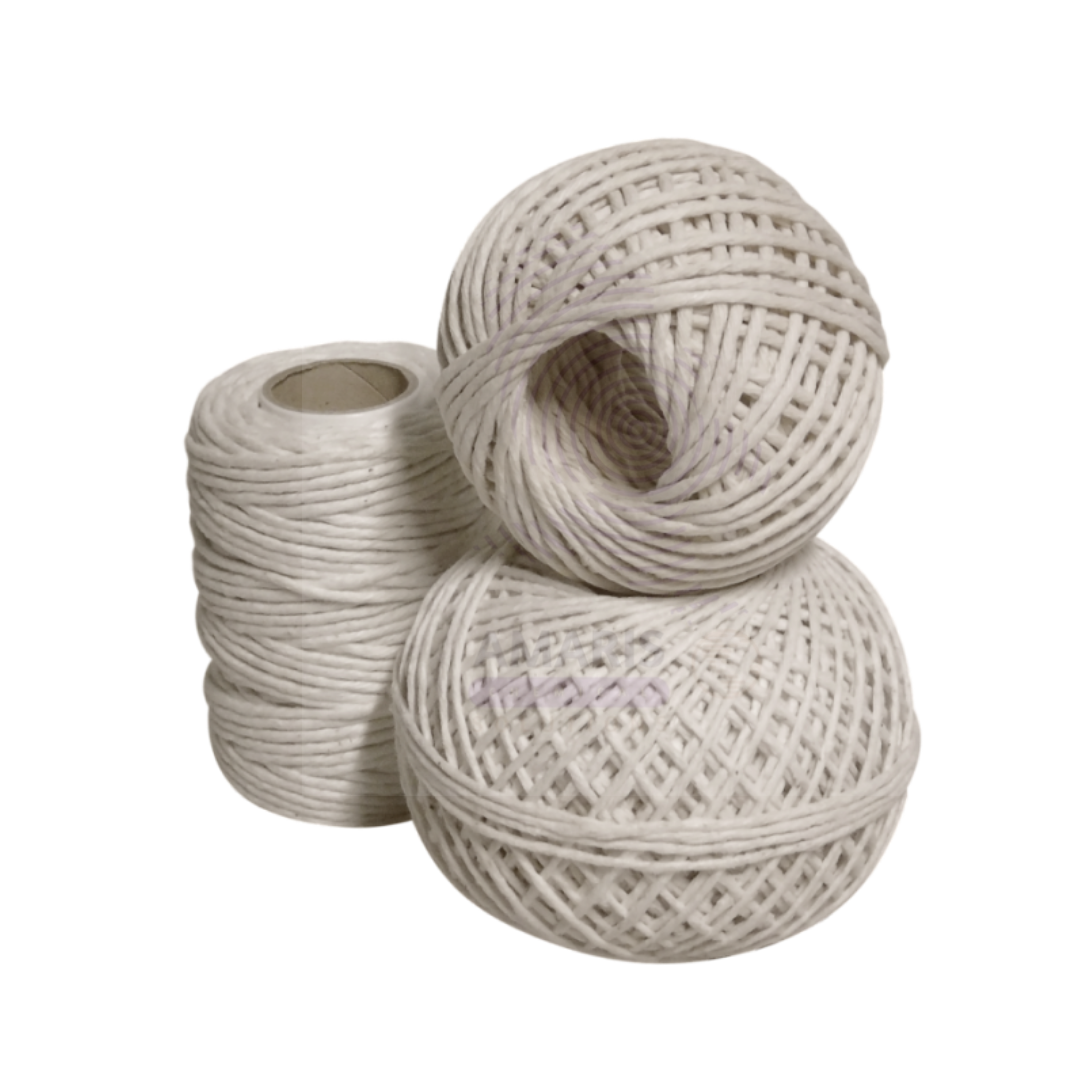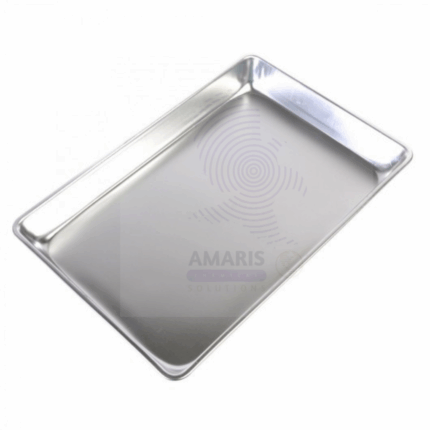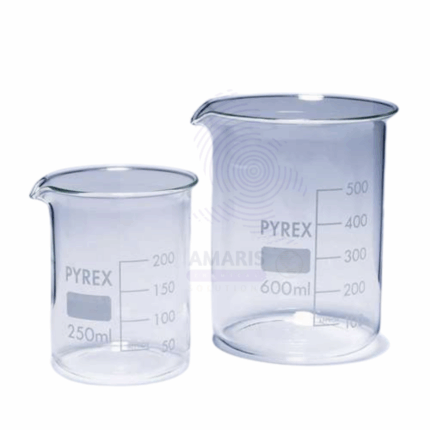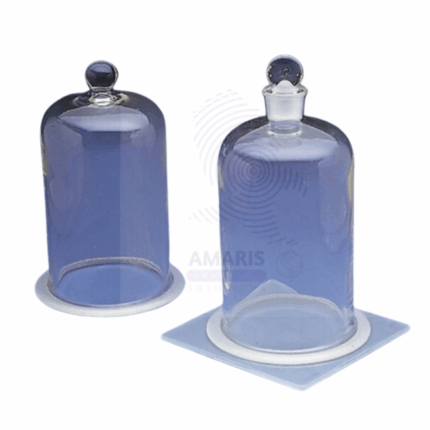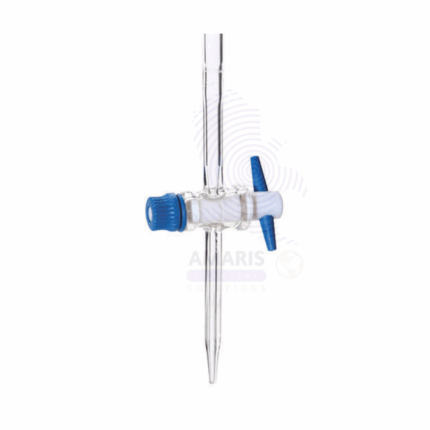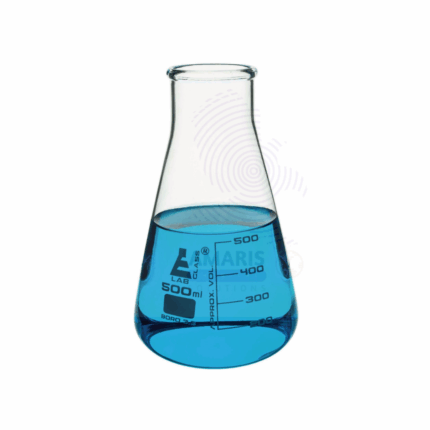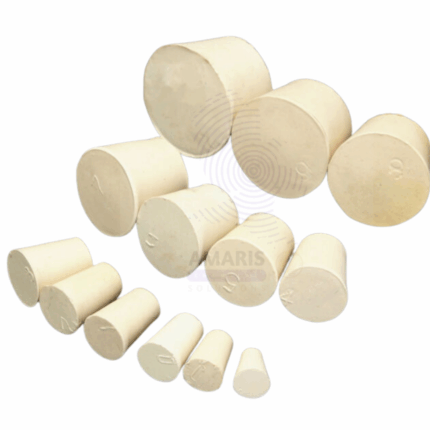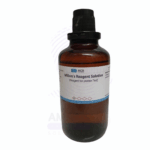
Millions Reagent Extra Pure
$ 14.75 Original price was: $ 14.75.$ 14.67Current price is: $ 14.67.
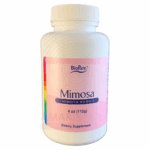
Mimosa Powder Extra Pure
$ 17.90 Original price was: $ 17.90.$ 17.78Current price is: $ 17.78.
Cotton twine
$ 6.99 Original price was: $ 6.99.$ 6.67Current price is: $ 6.67.
Whatsapp Order
Cotton Twine is a versatile filament made from twisted strands of natural cotton fibers. It is soft yet durable, offering flexibility and strength for binding, tying, or securing items in both laboratory and industrial environments. Cotton twine is non-abrasive, lint-minimal, and chemically inert to most laboratory reagents, making it suitable for specimen tying, light bundling, or general-purpose securing within controlled settings.
Description
Table of Contents
Toggle
Cotton twine
Primary Uses
- Laboratory Applications
- Used to tie glass apparatus such as thermometers, glass rods, or small tubing for heating or reaction setups.
- Employed in suspension preparations (e.g., hanging seed samples) in botanical experiments.
- Used to bundle test tubes or filter papers during drying or storage.
- Serves as a lightweight binder for securing cotton plugs on flasks or test tubes.
- Ideal for general tying tasks where chemical resistance and cleanliness are needed.
- Industrial Applications
- Used in packaging lightweight lab consumables for sample transport.
- Employed in small-scale manufacturing where biodegradable binding is preferred.
- Applied in quality control and maintenance workflows requiring temporary bundling.
- Utilized in R&D facilities for securing components gently.
Secondary Uses
- Other Industrial Uses
- Included in craft or prototype collection kits for light-duty binding.
- Occasionally used in packaging or design prototyping where chemical inertness matters.
KEY PRODUCT FEATURES
1.Basic Identification Attributes
- Product Type: Cotton Twine
- Material: Natural cotton fiber
- Structure: Twisted filament strand with moderate tensile strength
2.Physical & Chemical Properties
- Fiber Strength: Moderate tensile strength for light-duty applications
- Flexibility: High flexibility and knot security
- Compatibility: Chemically inert to most laboratory reagents
- Appearance: Off-white or beige, may fray slightly at ends
- Absorbency: Low moisture retention compared to rope or yarn
3.Safety & Hazard Attributes
- Toxicity: Non-toxic and safe for direct handling
- Flammability: Combustible textile fiber; keep clear of ignition sources
- Allergens: May cause mild skin sensitivity in some individuals
4.Storage & Handling Attributes
- Storage Conditions: Store in a dry, ventilated area to prevent mold or mildew
- Handling Precautions: Use scissors or knife to cut cleanly; avoid fraying ends
5.Regulatory & Compliance Attributes
- Manufactured under industry standards for textile products
- Suitable for laboratory and light industrial use where inert material is required
6.Environmental & Health Impact
- Biodegradable material with minimal ecological footprint
- Can be disposed with general waste or composted when clean
SAFETY HANDLING PRECAUTIONS
Safety Handling Precautions
- Keep away from open flames or hot surfaces
- Trim and knot securely to avoid loose ends that may tangle or snag
First Aid Measures
- Skin Contact: Wash hands if cotton fiber causes irritation
- Eye Contact: Rinse thoroughly if fibers get into eyes
- Inhalation: Not applicable under normal conditions
Firefighting Measures
- Fire Hazards: Twine may ignite under flame or high heat
- Extinguishing Media: Water spray, foam, dry chemical
- Special Precautions: Remove flammable sources and prevent spread to other combustibles
Related products
Aluminum Dissecting Pan with wax
$ 18.19
Aluminum Dissecting Pan with Wax is a durable, lightweight pan designed specifically for dissection and specimen preparation in laboratory, educational, and research settings. The pan features a sturdy aluminum base combined with a layer of wax that securely holds biological specimens in place during dissection. This design provides an easy-to-clean, reusable workspace that enhances precision and control for students, educators, and scientists. Its corrosion-resistant aluminum construction ensures longevity and resistance to chemicals typically used in dissection.
Beaker Pyrex
Beaker Pyrex is a high-quality laboratory container made from borosilicate glass known for its excellent thermal resistance, chemical durability, and mechanical strength. It is widely used for mixing, heating, and holding liquids in laboratories and industrial applications. Pyrex beakers can withstand rapid temperature changes without cracking, making them ideal for heating and cooling processes. They feature clear, transparent walls with easy-to-read graduated markings for volume measurement.
Bell Jar with Knob
Bell Jar with Knob is a dome-shaped vacuum accessory used to enclose and isolate experimental setups under reduced pressure. Made from thick borosilicate glass or impact-resistant acrylic, it features an integrated knob at the top for safe handling and positioning over vacuum plates. Its transparent body allows full visibility of internal processes while maintaining structural integrity under vacuum. Commonly used in laboratory and industrial applications, it supports vacuum experiments, sample isolation, degassing, and pressure-related demonstrations.
Burette Stop cork
Product Description
The Burette Stop Cork is a laboratory accessory designed to securely seal the open end of a burette, preventing liquid leakage and contamination during titration and other laboratory procedures. Made from high-quality, chemical-resistant cork or synthetic materials like rubber or silicone, it offers a snug fit for various burette sizes. The stop cork ensures controlled flow and precise measurement by allowing easy manipulation of the burette’s liquid contents.
conical flask
Conical flasks, also known as Erlenmeyer flasks, are widely used laboratory glassware characterized by a flat bottom, conical body, and a narrow neck. Made typically from borosilicate glass, they are designed to hold, mix, and heat liquids safely. The narrow neck helps reduce evaporation and splashing during experiments. Conical flasks are essential for titrations, culturing microorganisms, and general solution preparation in laboratories and industrial settings.
Cork to fit boiling tube cork
Cork to fit boiling tube cork is a precision-cut natural or synthetic cork designed to seal boiling tubes securely in laboratory settings. These corks provide an airtight seal while resisting mild heat and chemical exposure typically encountered in general lab procedures. They help prevent contamination, evaporation, or spillage of contents during storage, gentle heating, or experimental handling. Available in various diameters, these corks are essential for maintaining experimental integrity in both research and industrial laboratories.
Cork to fit conical flask
Cork to Fit Conical Flask is a tapered sealing component made from natural or synthetic cork, designed to provide a snug, airtight closure for conical (Erlenmeyer) flasks. These stoppers are essential for laboratory procedures requiring the containment of samples, prevention of evaporation, or protection from airborne contaminants. Their compressibility, resistance to mild chemicals, and reusability make them ideal for both general lab work and industrial testing environments. The corks are precisely sized to fit standard flask openings, ensuring compatibility with a wide range of flask volumes.
Deflagrating Spoon with lid
The Deflagrating Spoon with Lid is a specialized laboratory tool designed for safe combustion and thermal decomposition experiments. It features a heat-resistant spoon fitted with a secure, removable lid to contain and control the release of gases and flames during reactions. Commonly used in chemical demonstrations and analytical labs, this apparatus enhances user safety by minimizing exposure to reactive vapors and preventing splatter. Made from high-grade stainless steel or alloy, it ensures durability, thermal stability, and chemical resistance for repeated high-temperature use in both laboratory and industrial settings.


 Preservatives(food)
Preservatives(food) Flavor Enhancers
Flavor Enhancers Acidulants
Acidulants Sweeteners
Sweeteners Antioxidants
Antioxidants Colorants(food)
Colorants(food) Nutraceutical Ingredients (food)
Nutraceutical Ingredients (food) Nutrient Supplements
Nutrient Supplements Emulsifiers
Emulsifiers
 Collectors
Collectors Dust Suppressants
Dust Suppressants Explosives and Blasting Agents
Explosives and Blasting Agents Flocculants and Coagulants
Flocculants and Coagulants Frothers
Frothers Leaching Agents
Leaching Agents pH Modifiers
pH Modifiers Precious Metal Extraction Agents
Precious Metal Extraction Agents
 Antioxidants(plastic)
Antioxidants(plastic) Colorants (Pigments, Dyes)
Colorants (Pigments, Dyes) Fillers and Reinforcements
Fillers and Reinforcements Flame Retardants
Flame Retardants Monomers
Monomers Plasticizers
Plasticizers Polymerization Initiators
Polymerization Initiators Stabilizers (UV, Heat)
Stabilizers (UV, Heat)
 Antifoaming Agents
Antifoaming Agents Chelating Agents
Chelating Agents Coagulants and Flocculants
Coagulants and Flocculants Corrosion Inhibitors
Corrosion Inhibitors Disinfectants and Biocides
Disinfectants and Biocides Oxidizing Agents
Oxidizing Agents pH Adjusters
pH Adjusters Scale Inhibitors( water)
Scale Inhibitors( water)
 Antioxidants(cosmetic)
Antioxidants(cosmetic) Emollients
Emollients Fragrances and Essential Oils
Fragrances and Essential Oils Humectants
Humectants Preservatives
Preservatives Surfactants(cosmetic)
Surfactants(cosmetic) Thickeners
Thickeners UV Filters
UV Filters
 Fertilizers
Fertilizers Soil Conditioners
Soil Conditioners Plant Growth Regulators
Plant Growth Regulators Animal Feed Additives
Animal Feed Additives Biostimulants
Biostimulants Pesticides (Herbicides, Insecticides, Fungicides)
Pesticides (Herbicides, Insecticides, Fungicides)
 Active Pharmaceutical Ingredients (APIs)
Active Pharmaceutical Ingredients (APIs) Excipients
Excipients Solvents(pharmaceutical)
Solvents(pharmaceutical) Antibiotics
Antibiotics Antiseptics and Disinfectants
Antiseptics and Disinfectants Vaccine Adjuvants
Vaccine Adjuvants Nutraceutical Ingredients (pharmaceutical)
Nutraceutical Ingredients (pharmaceutical) Analgesics & Antipyretics
Analgesics & Antipyretics
 Analytical Reagents
Analytical Reagents Solvents(lab)
Solvents(lab) Chromatography Chemicals
Chromatography Chemicals Spectroscopy Reagents
Spectroscopy Reagents microbiology-and-cell-culture-reagents
microbiology-and-cell-culture-reagents Molecular Biology Reagents
Molecular Biology Reagents Biochemical Reagents
Biochemical Reagents Inorganic and Organic Standards
Inorganic and Organic Standards Laboratory Safety Chemicals
Laboratory Safety Chemicals Specialty Laboratory Chemicals(Special Laboratory Equipment)
Specialty Laboratory Chemicals(Special Laboratory Equipment)
 Demulsifiers
Demulsifiers Hydraulic Fracturing Fluids
Hydraulic Fracturing Fluids Scale Inhibitors(oil)
Scale Inhibitors(oil) Surfactants(oil)
Surfactants(oil) Drilling Fluids
Drilling Fluids
 Dyes and Pigments
Dyes and Pigments Bleaching Agents
Bleaching Agents Softening Agents
Softening Agents Finishing Agents
Finishing Agents Antistatic Agents
Antistatic Agents
 Admixtures
Admixtures Waterproofing Agents
Waterproofing Agents Sealants and Adhesives
Sealants and Adhesives Curing Compounds
Curing Compounds Concrete Repair Chemicals
Concrete Repair Chemicals Anti-Corrosion Coatings
Anti-Corrosion Coatings
 Surfactants(cleaning)
Surfactants(cleaning) Builders
Builders Enzymes
Enzymes Solvents (Cleaning)
Solvents (Cleaning) Fragrances
Fragrances
 Electronic Chemicals
Electronic Chemicals Catalysts
Catalysts Lubricants
Lubricants Photographic Chemicals
Photographic Chemicals Refrigerants
Refrigerants Automotive chemicals
Automotive chemicals Pyrotechnic Chemicals
Pyrotechnic Chemicals
 Biodegradable Surfactants
Biodegradable Surfactants Bio-based Solvents
Bio-based Solvents Renewable Polymers
Renewable Polymers Carbon Capture Chemicals
Carbon Capture Chemicals Wastewater Treatment Chemicals
Wastewater Treatment Chemicals
 Pigments
Pigments Solvents(paint)
Solvents(paint) Specialty Coatings
Specialty Coatings Binders/Resins
Binders/Resins Additives
Additives Driers
Driers Anti-Corrosion Agents
Anti-Corrosion Agents Functional Coatings
Functional Coatings Application-Specific Coatings
Application-Specific Coatings
 Fresh Herbs
Fresh Herbs Ground Spices
Ground Spices Whole Spices
Whole Spices Spice Blends
Spice Blends Dried Herbs
Dried Herbs
 Leavening Agents
Leavening Agents Dough Conditioners
Dough Conditioners Flour Treatments
Flour Treatments Fat Replacers
Fat Replacers Decoratives
Decoratives Preservatives(baking)
Preservatives(baking)
 Plasticizers & Softeners
Plasticizers & Softeners Reinforcing Agents
Reinforcing Agents Adhesion Promoters
Adhesion Promoters Vulcanizing Agents
Vulcanizing Agents Antidegradants
Antidegradants Blowing Agents
Blowing Agents Fillers & Extenders
Fillers & Extenders Accelerators & Retarders
Accelerators & Retarders